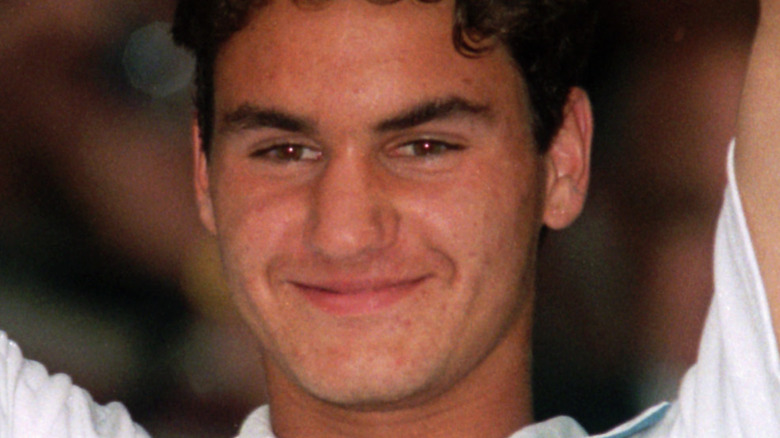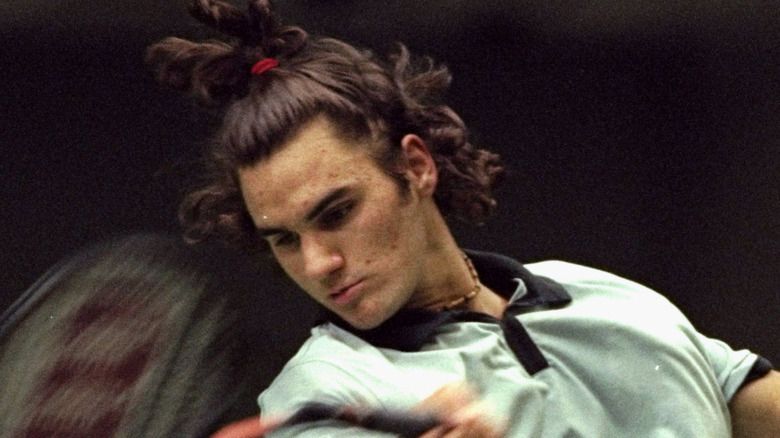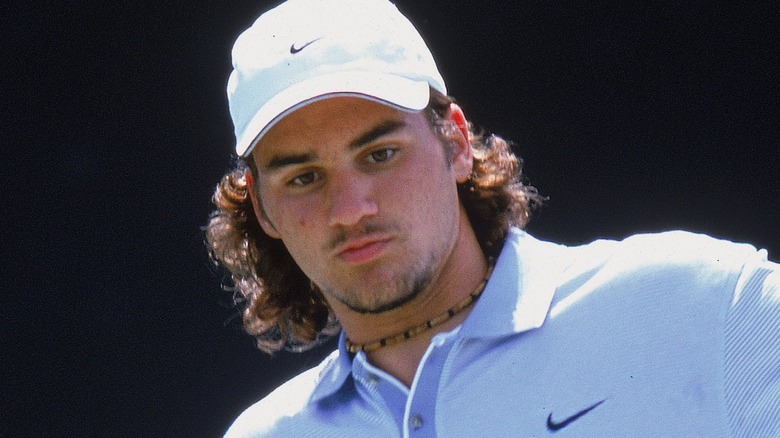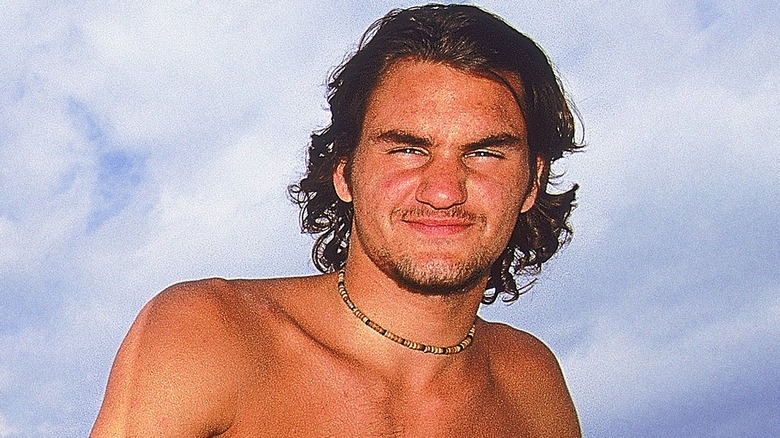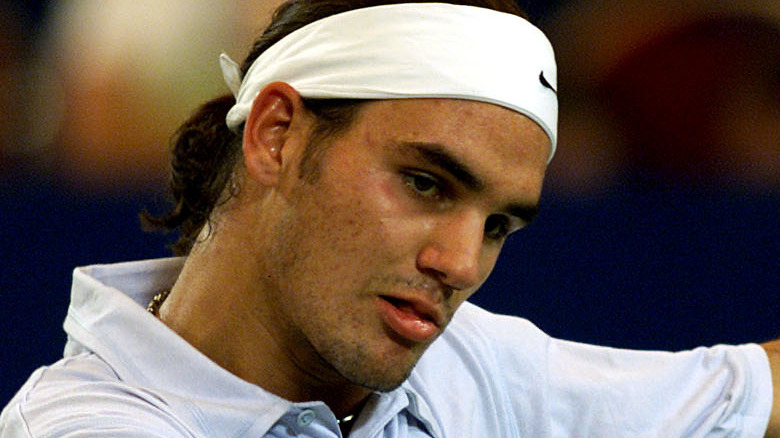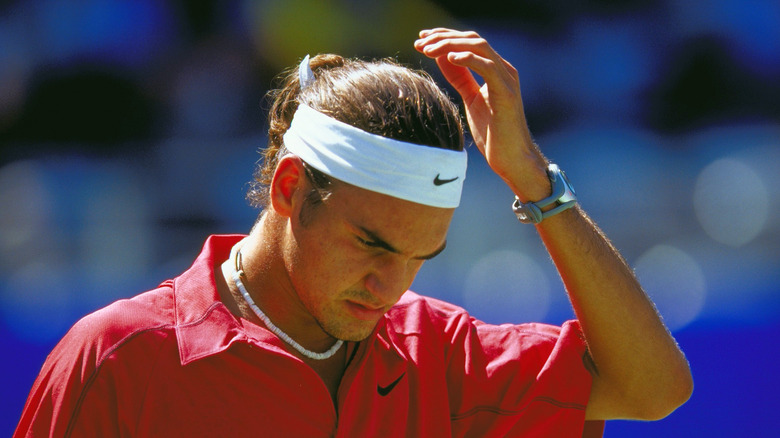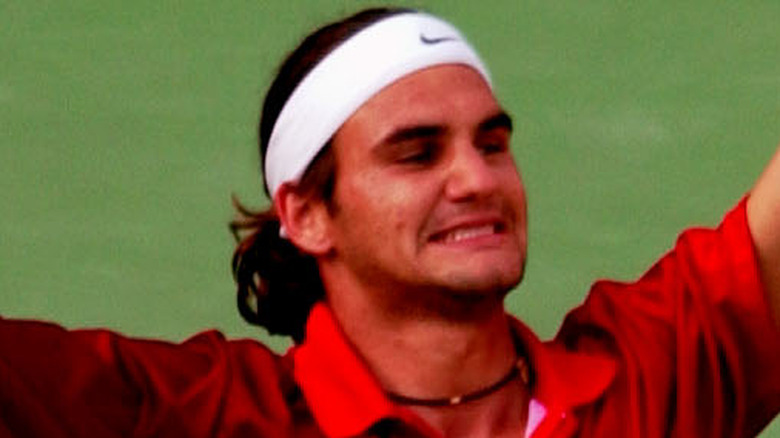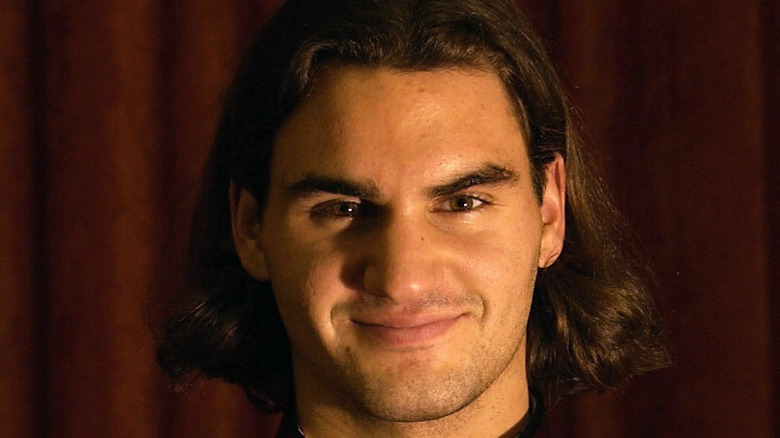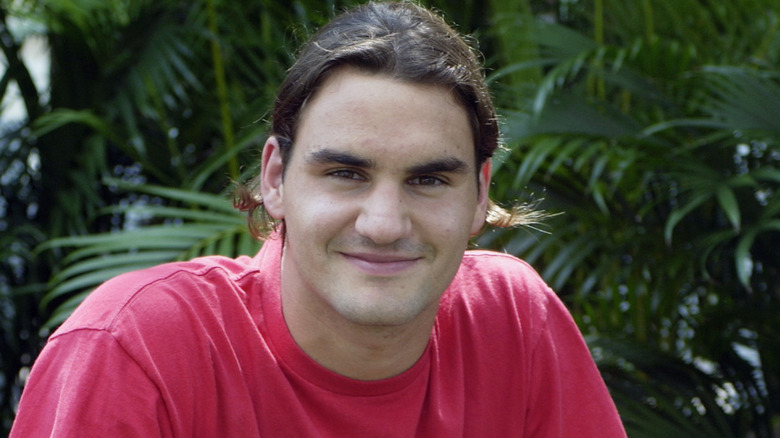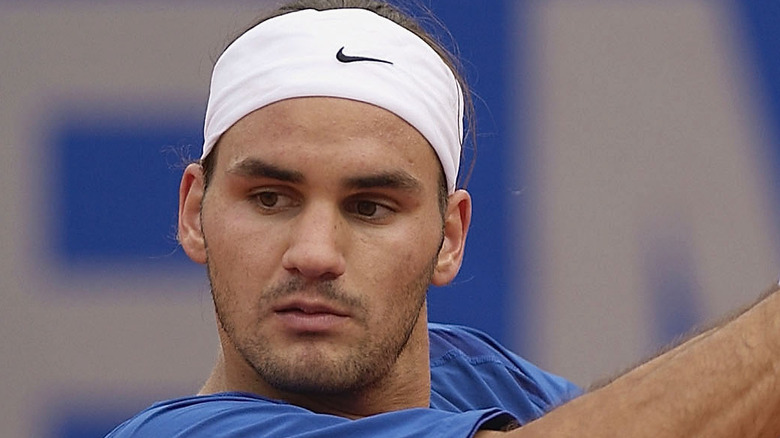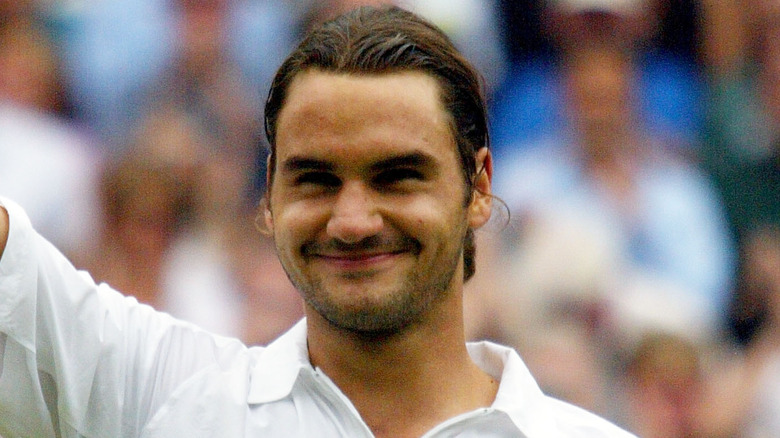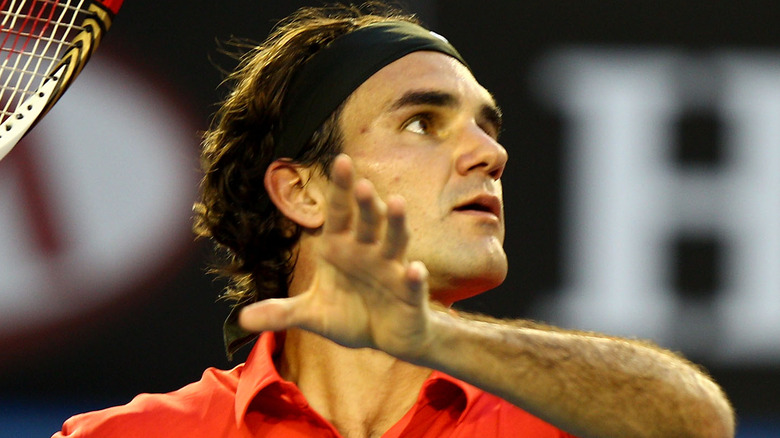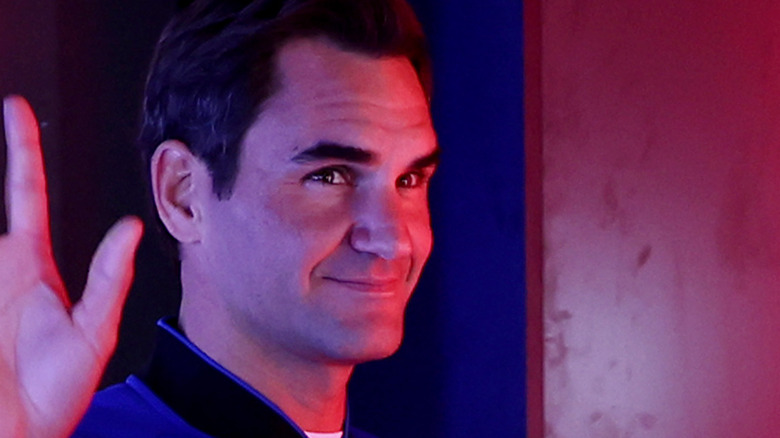The Transformation Of Roger Federer
"Your career has set the tone for what it means to achieve excellence and lead with integrity and poise," posted Serbian tennis great Novak Djokovic on his social media channel in response to Roger Federer's retirement. Fellow legend and all-time Grand Slam record champion rival Rafael Nadal also posted, "It's been a pleasure but also an honor and privilege to share all these years with you." Such praise and respect from winners of this caliber are reserved for very few athletes. However, in this case, it is richly deserved for an individual who transformed tennis and elevated the game to an unprecedented level.
Swiss sporting icon Roger Federer announced on September 15, 2022 that he was finally stepping away from the professional tour after more than 1,500 matches and over 24 glittering, trophy-laden years. After a three-year hiatus, Federer's final outing will be at the Laver Cup in 2022, where he will team up with great friend and rival Rafael Nadal for one final swing. It is fitting that Swedish legend Bjorn Borg should captain Federer's team — a player who, like Federer, transcended the sport and became a global icon.
Here, we will delve into how Federer went from a ball boy at his hometown tournament to one of the most recognized faces in the modern world and someone who will leave an indelible mark on the sport.
As a child, Roger Federer became obsessed with tennis thanks to his parents
Roger Federer was born on August 8, 1981, in Basel, Switzerland to his Swiss-German father, Robert Federer and Afrikaner mother, Lynette Federer. Although sport would be his vocation, Federer revealed to ATP that his parents prioritized education as the starting point for his life as this was expected in his native Switzerland. "The original mindset in Switzerland is of course education always goes first," he said. "That was the same that my parents also taught me." Nevertheless, he became an avid supporter of his hometown soccer club, FC Basel, and regularly played soccer, basketball and badminton at a high level.
It was picking up a wooden tennis racket at three after his parents used to take him along to their local tennis club that proved to be life-changing, per The Times. Federer's introduction to the sport was a world away from how it is played today, especially with the technological advances the sport has undergone. As he told ATP, "Instead of the neon yellow tennis balls, I started off with the white tennis balls. In Switzerland, we used a lot of pressure-less tennis balls as well. I don't know how many players of this generation today could say that."
Roger Federer got his first coach at age 12 and worked on his temper
After picking up a wooden racket at only three years old, Roger Federer soon became fixated on practicing his game. As he recalled to ATP, "I remember playing against the wall and at the cupboards and the garage doors for hours." Federer learned to diversify his game from a young age as he developed his groundstrokes on clay courts during the summer months, then moved to fast indoor carpet courts during the winter months to perfect his serve and volley game.
By the age of 12, Federer was ready to further his game. He hired a professional coach, Australian Peter Carter, who worked with the Swiss tennis federation (per The Telegraph). Despite clearly possessing otherworldly talent from a young age, Federer had a tendency to allow his emotions to get the best of him, causing his game to falter. On some occasions, this emotional state escalated into counter-productive actions such as racket abuse. "I'd throw the racket tactically, into the nets, so it wouldn't break and I wouldn't have to go to my parents, because it's a lot of money," he told The Guardian. Other times Federer would loudly berate himself, distracting other players and forcing umpires to discipline him. Federer recounted this period of development to The Times: "I used to get so angry and frustrated ... I knew what I could do, and failure made me mad," he said. This pursuit of perfection and vociferous displeasure when this wasn't fulfilled caused his father embarrassment to the point where after playing, Federer would be driven home in silence.
Roger Federer turned professional at 16 and struggled with staying positive
Roger Federer joined the professional tour at 16 in 1998. By this age, he had learned to temper his emotions. As he told The Times, "I knew that when I went to the big venues, such as Wimbledon, and when I played the top men, I couldn't behave like that." Nevertheless, Federer struggled to adapt to the work ethic and compromising mindset needed to be a competitive professional player.
"I would come out on court at 9 in the morning for practice," he confessed to Sports Illustrated, while his opponent would arrive much earlier and be game-ready. As Federer reflected, he used to think, "Here I am. One hour later, you're down 6-1, 4-1. It's over. It wasn't worth it. Like, what am I doing?" This rude awakening about what is expected of a professional player forced Federer to change his habits and treat practice with the utmost importance.
He won the junior Wimbledon title at 17, showing he was ready to step up to the senior level
1998 proved to be a coming-of-age year for Roger Federer as he ended the year with the No. 1 junior world ranking. His crowning achievement came at Wimbledon as he won the Boys' Singles title beating Iraki Labadze 6-4, 6-4, as well as the Boys' Doubles title with Belgian Olivier Rochus. Success at junior level doesn't always translate into the professional game, but the BBC commentator at the time saw Federer's potential after this victory, saying, "We'll be seeing him again."
1998 also saw Federer make his debut on the ATP professional tour, as he lost in the first round to Lucas Arnold Ker at Swiss Open in Gstaad, Switzerland. Federer won his first ATP match against Guillaume Raoux at the Grand Prix de Tennis de Toulouse. He then received a wildcard into his hometown tournament in Basel, where he used to be a ball boy. There, he faced (and was defeated by) American great Andre Agassi in the first round. Despite this loss on his debut outing, Federer would go on to win this tournament a record ten times.
In 2001, Roger Federer shot to fame after beating his idol Pete Sampras at Wimbledon
From 1998 to mid-2001, Roger Federer successfully broke into the world's top 100, reached his first ATP final at the Marseille Open in 2000. He later won his first ATP title in 2001 at the Milan indoor tournament. The 2001 French Open saw him reach his first Grand Slam quarter-final, losing to eventual finalist Alex Corretja. This run saw Federer break into the top 15 for the first time in his career.
It was at the 2001 Wimbledon Championships where Federer captivated the public's imagination for the first time as he astonishingly defeated the four-time defending champion, all-time Grand Slam leader and personal idol Pete Sampras in five enthralling sets. One question at Federer's first press conference after this victory neatly summarized this achievement: "You just changed the course of history, stopped a 32-match winning streak that Sampras had. How does that feel?" Sampras would retire the following year, so it was only a matter of time before Federer would take up the mantle and dominate the game as he did.
Roger Federer continued his rise, winning his first Grand Slam title in 2003
After this life-changing victory, Federer continued to steadily improve, as he finished 2001 with an ATP ranking of 13. 2003 marked the point where Federer transitioned from being a good player to a great player. The first two Grand Slams proved disappointing for the Swiss maestro as, despite a high ranking, Federer lost in the fourth round of the Australian Open and then crashed out in the first round of the French Open after committing a remarkable 82 unforced errors.
Determined to reverse this disappointment for the grass court season, Federer won his first title on this surface in Halle, Germany, and then set his sights on winning that year's Wimbledon. Federer reached his first Grand Slam semi-final to set up a mouth-watering tie against world No. 1 and tournament favorite Andy Roddick. Playing sublime tennis, Federer dispatched Roddick in straight sets and repeated this in the final against Mark Philippoussis to win his first Grand Slam title. After his victory, an emotional Federer said, "I was always joking when I was a boy, 'I'm gonna win this.' Now I have it!"
He continued to prove his skill with win after win
After claiming his first Wimbledon and Grand Slam title, Roger Federer would start an era of dominance. Between 2003 and 2009, he won three Australian Opens, six Wimbledons, and five U.S. Opens. The one Grand Slam that continually eluded him was the French Open as he, like everyone else, would be no match for the "King of Clay" Rafael Nadal, who beat Federer in three consecutive finals from 2006 to 2008.
2009 would change this, as an injury-hit Rafael Nadal suffered his first-ever loss at Roland Garros. This gave Federer his fourth attempt to win the French Open and complete the career Grand Slam. He roundly seized the opportunity by winning in straight sets. This was an emotional moment for Federer, as he became only the sixth man to complete the Career Grand Slam.
"The waiting and the age definitely has a big impact on how important and how nice this victory actually is," he told ATP at the time. This was followed by winning a sixth Wimbledon title as he beat Andy Roddick in five grueling sets, clinching it 16-14 games in the fifth. This victory was hugely significant, as claiming his 15th Grand Slam title meant he surpassed his idol Pete Sampras' Grand Slam record. Federer had to come back from two sets down and hold his nerve in the fifth. As he explained to ATP, "The satisfaction is maybe bigger this time around to come through, because I couldn't control the match at all."
In 2009, Roger Federer married and became a father
In 2009, Roger Federer married his long-time partner and former professional player Miroslava "Mirka" Vavrinec in a small ceremony at Wenkenhof Villa in Riehen near Basel, surrounded by close friends and family. Federer and Vavrinec formally met at the Sydney Olympics in 2000, where they both competed. Federer has credited her with instilling a greater work ethic in his game. As he told The Guardian, when she was a professional, "she used to train five, six hours in a row. ... She was tough, and she taught me how to work."
Later that year, he became a father to identical twins Myla and Charlene. Federer shared with Mercedes AMG that fatherhood tempered his emotions even further, as he understood the expectation of being a role model to them. "When I became a father, I had to restrain myself even further and couldn't allow myself to be upset by a defeat for long," he said. Balancing parental and professional responsibilities is a challenge for anyone. As Federer acknowledged to Sports Illustrated, "I thought my schedule was going to be cut by maybe 30 percent." Yet, Federer has said he's managed to play a full schedule and balance these commitments. Federer and Vavrinec would later have another set of twins, Leo and Lenny, in 2014.
Over time, Roger Federer had to adjust his game
As tennis evolved, Federer needed to evolve with it. In his thirties, Federer naturally played fewer tournaments and even skipped clay court seasons in order to protect his body from serious injuries. Federer told Sports Illustrated, "I was probably enjoying myself more when I was winning five to 10 tournaments a year."
At the 2016 Wimbledon Championships, Federer suffered a fall in his match against Milos Raonic. He was able to finish the match, albeit suffering a loss, but scans later showed he required knee surgery for the first time in his career (via Sky News). Having just turned 35, Federer couldn't estimate when he would return. He said, "I don't know yet ... I don't even want to know. I just felt not the same afterwards."
Having not played for six months, Federer returned to action at the 2017 Australian Open and defeated four top 10 opponents, including a stunning five-set victory over old foe Rafael Nadal in the final (via The Guardian). There was a noticeable change in Federer's game, as he used a heavier racket with a larger head, which enabled him to serve more powerfully and play more aggressive groundstrokes to help shorten rallies.
Roger Federer became part of an epic tennis rivalry as the Big Three emerged
Roger Federer is widely considered one of the greatest male players to have ever graced the sport. He has won 103 ATP singles titles, including 20 Grand Slams, 8 of which are Wimbledon titles, and has earned $130 million in prize money. Yet he has arguably been surpassed by his two great rivals, Novak Djokovic and Rafael Nadal. Federer has a losing record against both of these opponents, and while Federer has taken time out of the game to recuperate from a chronic back injury, both Djokovic and Nadal have surpassed his 20 Grand Slam titles.
Nevertheless, Federer remained respectful of them as rivals. "Playing against Rafa for so many years has been amazing — he pushed me to innovate, work harder, and to develop my game," he once told Vogue. "I don't think I would be the player I am today without him as my chief rival."
And of Djokovic, he told The Guardian, "Is Djokovic now the man to beat? Absolutely. Does he deserve to be where he is? 100 per cent."
Roger Federer developed his iconic off-court style
While Roger Federer is widely known for his on-court style, over the years, his off-court red carpet style has also begun to make the headlines. Some of his best outfits have included a tailored suit by Giorgio Armani paired daringly with a roll-neck sweater, and an all-navy look paired with a brown suede jacket at the 2016 Louis Vuitton fashion show.
As Federer explained to GQ, he learned more about dressing himself as his fame grew thanks to his wife. "I used to wear jogging shoes, jeans and a practice shirt, then when Mirka met me, she would look and go, 'Errr, are you sure about this look?'"
In fact, in the past, Federer even wore the same suit and tie on every red carpet. Eventually, he knew he had to change. "I started to enjoy making changes, trying out a few things, and different combinations," he said. "You're happy to get dressed up, especially in the big cities like Paris, London or New York and go out."
Chronic knee injuries and the pandemic moved Roger Federer to announce his retirement
Roger Federer's last professional match was at the 2021 Wimbledon Championships, where he bowed out in straight sets to Hubert Hurkacz, including a humiliating 6-0 final set loss (via New York Times). Federer announced later that year he would require knee surgery, which would rule him out for the remainder of the season. He shared on Instagram that taking this time out was necessary: "I want to be running around later as well again and I want to give myself a glimmer of hope to return to the tour in some shape or form," he wrote.
Federer would not return to the tour for the remainder of 2021, and missed all of the 2022 season. On September 15, 2022, Federer shared on Twitter that he would leave the professional game for good after the Laver Cup.
"This is a bittersweet decision, because I will miss everything the tour has given me," he said. "But at the same time, there is so much to celebrate. I consider myself one of the most fortunate people on Earth. I was given a special talent to play tennis, and I did it at a level that I never imagined, for much longer than I ever thought possible."
